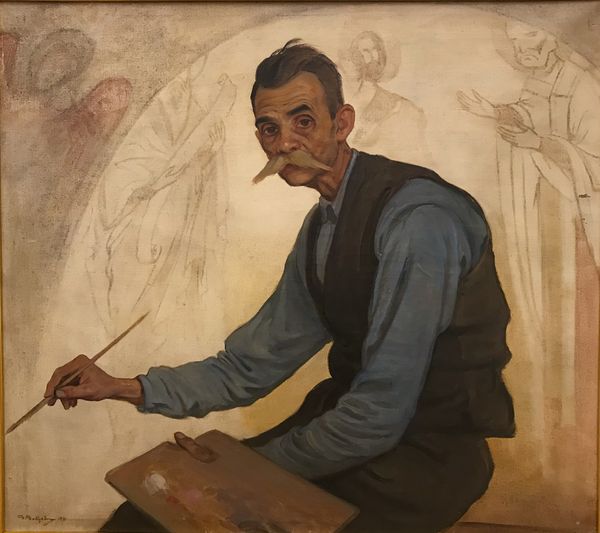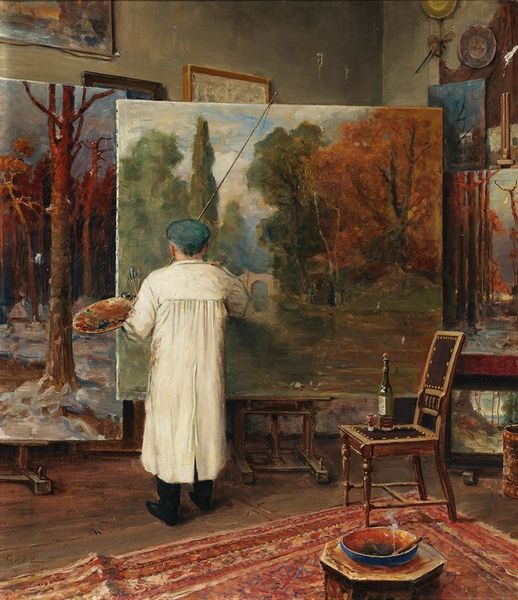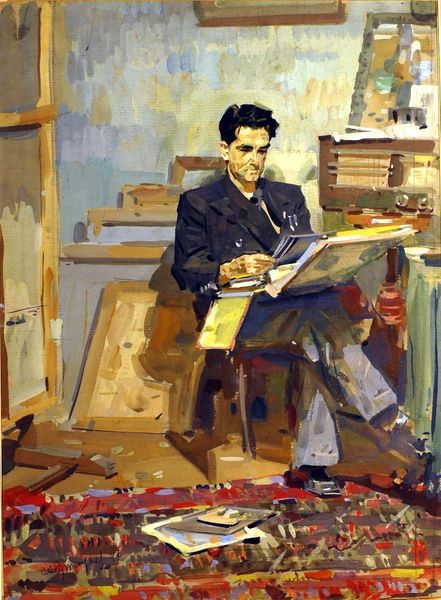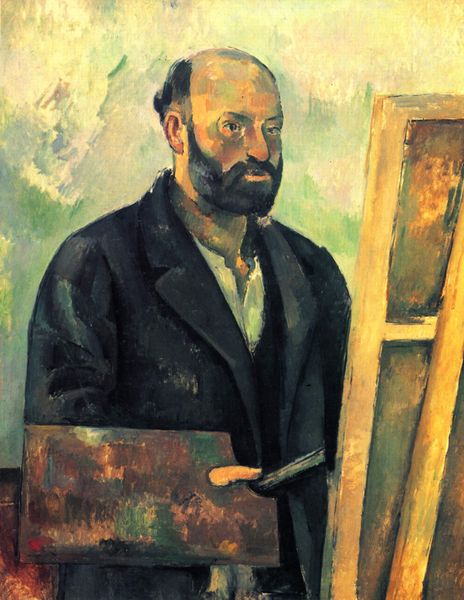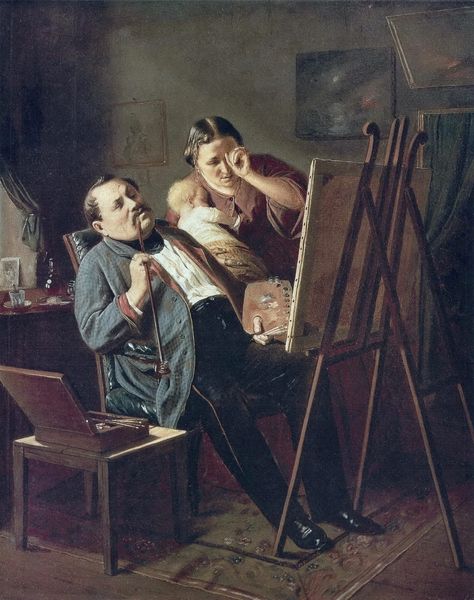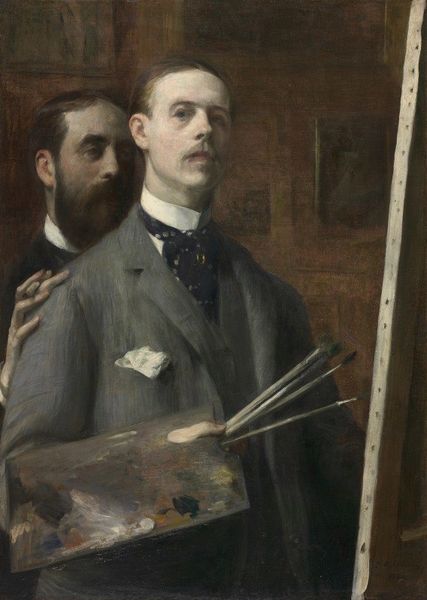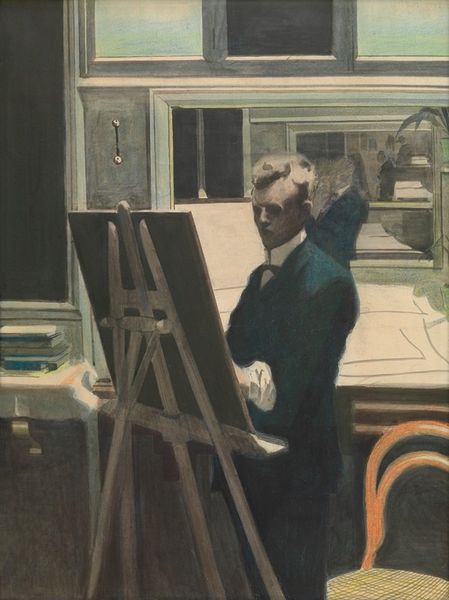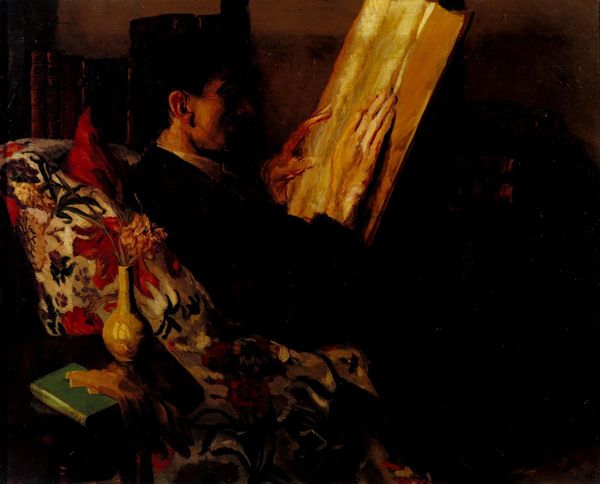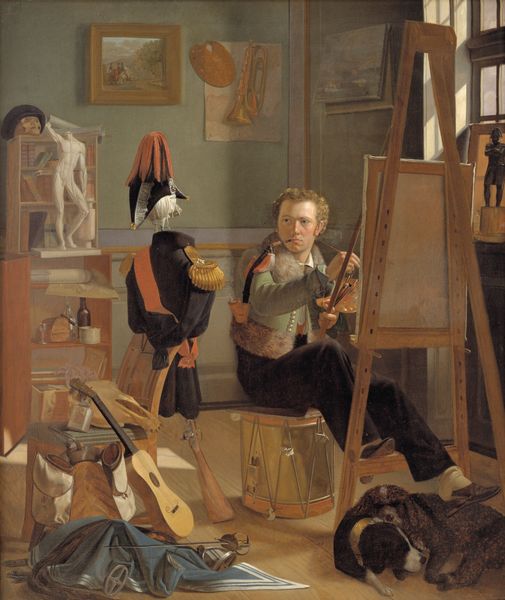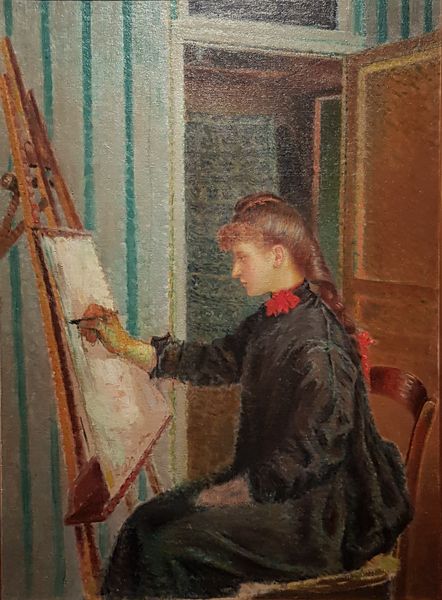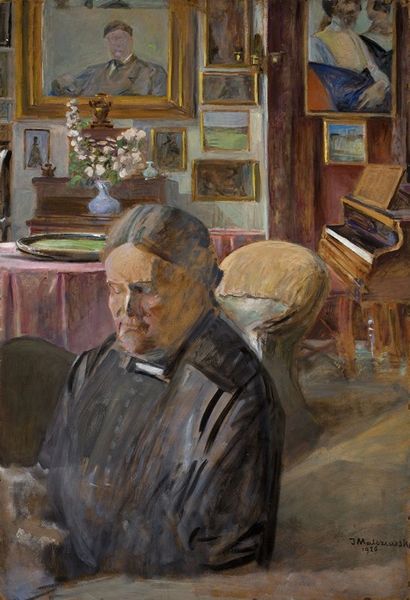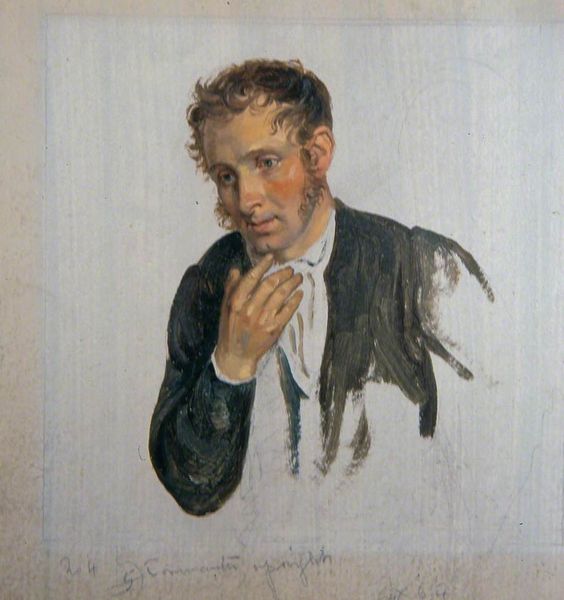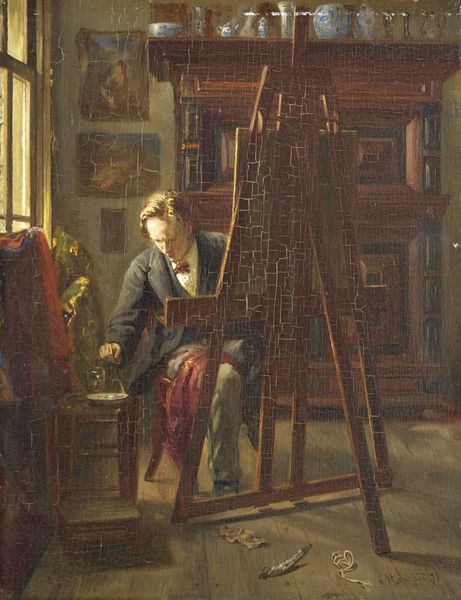
painting, oil-paint
#
portrait
#
self-portrait
#
painting
#
oil-paint
#
oil painting
#
modernism
#
realism
Copyright: Public domain
Editor: This is Alexandre Jacovleff’s "Self-portrait," created in 1917 using oil paint. There's a quiet intensity to his gaze, and the surrounding canvases give it a feeling of artistic introspection. What do you see in this piece, beyond just the surface representation? Curator: What immediately strikes me is the artist's assertive declaration of self. In 1917, Jacovleff, though Russian born, was deeply engaged with Parisian artistic circles. This self-portrait, painted on the cusp of significant global upheaval, reads as a reclamation of identity amidst shifting geopolitical landscapes. Notice how his piercing gaze challenges the viewer, refusing to be passively observed. How does that confrontation resonate with you? Editor: It’s definitely commanding, but I also see a vulnerability there, almost like he's searching for validation. Curator: Precisely! This tension – the push and pull between assertion and vulnerability – is what makes this portrait so compelling. Consider the context: the rise of avant-garde movements challenging traditional notions of representation. Jacovleff seems to be grappling with his place within these movements while simultaneously holding onto his academic training. The presence of other canvases suggests his constant engagement with diverse styles and his desire to navigate a space for himself. Does the staged studio imply something of this negotiation as well? Editor: It does! It feels like he's very deliberately curating the image he wants to project. Almost performative. Curator: Exactly! In that sense, Jacovleff engages in a crucial act of self-fashioning. What might this image tell us about the construction of artistic identity, and the artist's awareness of their public persona in a rapidly changing world? Editor: Wow, I never considered it that way. I was focused on the face, but the whole scene contributes to a much more complex message. Curator: And that complexity invites us to continually re-evaluate not only this single image, but the broader dialogue surrounding identity, representation, and artistic agency in the early 20th century. It gives me much to consider. Thank you!
Comments
No comments
Be the first to comment and join the conversation on the ultimate creative platform.
